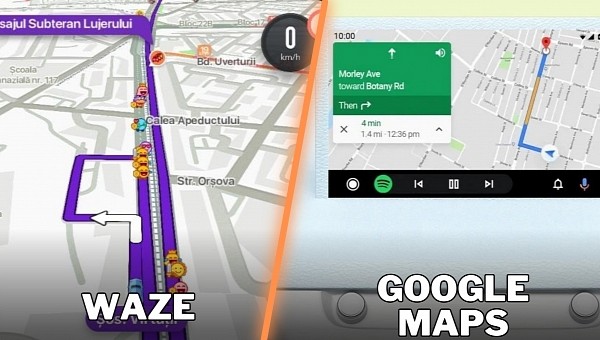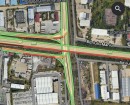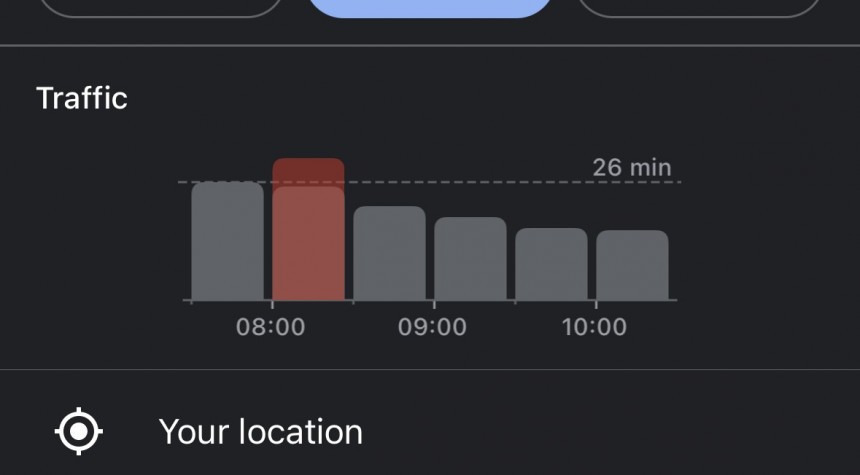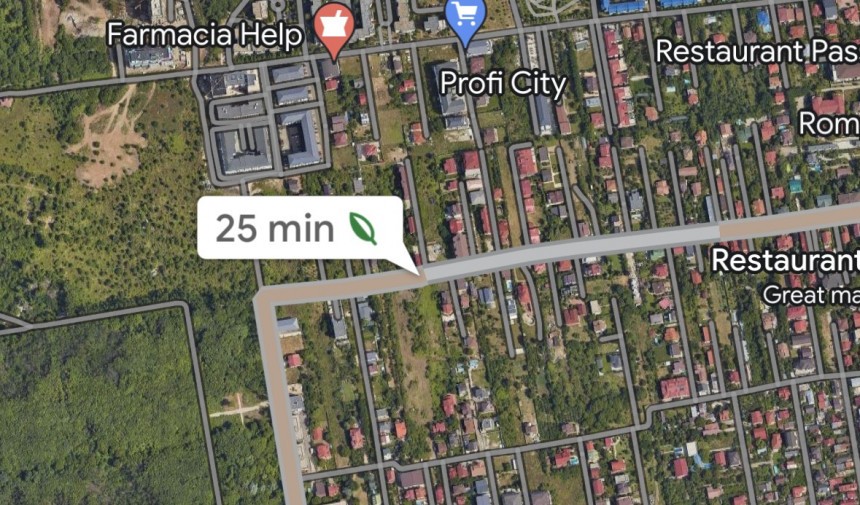Third-party data shows Waze is the number one alternative to Google Maps, particularly thanks to accurate ETAs and traffic reports.
The crowdsourcing engine bundled with Waze sets it apart from the rest of the navigation apps, therefore helping it make the road more predictable and eventually fight traffic more effectively.
Google Maps and Waze are, therefore, competing products, so it’s no surprise some users are baffled when they find out both are owned by Google. The Mountain View-based search giant purchased Waze back in 2013 and continues to operate independently from Google Maps.
Choosing the right navigation solution for the daily commute should theoretically be an easy mission, but if you’re particularly interested in beating rush hour traffic, things get complicated.
This is because despite looking similar, Google Maps and Waze are two different beasts. At the end of the day, they help drivers in different ways.
Choosing the right navigation app for the daily commute comes down to answering a simple question. How much do you care about traffic conditions?
The application offers route guidance for turn-by-turn navigation, and at the same time, it also sports a few extras, such as satellite maps. However, I still think these come in handier when driving to a place you’ve never been to. Daily commutes typically rely on the same routes, so drivers don’t necessarily need assistance to figure out which way they need to go.
Google Maps displays traffic information using a color-coded approach. The route ahead could be colored in red if you’re about to face heavy traffic or in green if no slowdowns are expected.
This way, you can tell in advance if you’re likely to experience any delays, especially if you plan to arrive home on time for dinner.
Google Maps also lets you share the drive with others. The application allows friends and family to see your location in real time, therefore knowing precisely where you are.
The ETAs provided by Google Maps are most of the time accurate, especially as the application uses historical traffic patterns to generate routes. Google Maps typically keeps you on the same route to the destination, so the navigation experience overall is more straightforward.
Google Maps also supports traffic reports, but they’re not necessarily very common. Some of the alerts, including for accidents, are imported from Waze, but there are times when you could end up stuck in traffic without knowing why. As such, things are a lot quieter in your car if you use Google Maps, so you don’t have to worry about anything else than driving to the destination.
The application uses a crowdsourcing engine to enable users to send traffic reports. If someone sees an accident happening in front of their car, they can report it on Waze. The other motorists whose routes go through the same location are then notified of the accident.
If the crash produces slowdowns, Waze collects data from the other vehicles on the road where the app is running and calculates the potential delay on your ETA. If the traffic is very heavy, Waze displays a dedicated slowdown bar on the screen, letting you know how long it’d take to get past the traffic jam.
Waze could make the daily commute more complicated by suggesting secondary roads, sometimes through residential areas. This is because the application is always looking for the fastest route to the destination. If traffic conditions get worse, Waze could re-route to find a faster way to get home.
As such, the routes suggested by Waze could be considered more difficult than the ones offered by Google Maps. You may not be provided with the same route every day, depending on traffic conditions and the reported incidents on your way home.
Waze requires an Internet connection for the entire drive. The application downloads information on traffic conditions and must be online to receive the reports submitted by other users on the road. Using the application in offline mode is not possible. Google Maps does come with offline maps, but if it’s enabled, it only provides turn-by-turn navigation and nothing more. This means you’re losing all the extras, including information on traffic conditions.
Both Google Maps and Waze support saving home and work locations and can be configured to provide ETAs in advance based on your commuting hours. Waze also supports planned drives, in which case it’ll tell you when it’s time to leave to arrive at the destination at a specific hour. Like Google Maps, it also lets users share drives, either within the app or with a web link.
Needless to say, if your daily commute involves other transportation modes than driving, Google Maps is the only choice. Waze is exclusively focused on driving.
Google Maps and Waze are, therefore, competing products, so it’s no surprise some users are baffled when they find out both are owned by Google. The Mountain View-based search giant purchased Waze back in 2013 and continues to operate independently from Google Maps.
Choosing the right navigation solution for the daily commute should theoretically be an easy mission, but if you’re particularly interested in beating rush hour traffic, things get complicated.
This is because despite looking similar, Google Maps and Waze are two different beasts. At the end of the day, they help drivers in different ways.
Choosing the right navigation app for the daily commute comes down to answering a simple question. How much do you care about traffic conditions?
Google Maps for the daily commute
Like most other navigation apps, Google Maps has the essential feature package to ensure more efficient commuting.The application offers route guidance for turn-by-turn navigation, and at the same time, it also sports a few extras, such as satellite maps. However, I still think these come in handier when driving to a place you’ve never been to. Daily commutes typically rely on the same routes, so drivers don’t necessarily need assistance to figure out which way they need to go.
Google Maps displays traffic information using a color-coded approach. The route ahead could be colored in red if you’re about to face heavy traffic or in green if no slowdowns are expected.
This way, you can tell in advance if you’re likely to experience any delays, especially if you plan to arrive home on time for dinner.
Google Maps also lets you share the drive with others. The application allows friends and family to see your location in real time, therefore knowing precisely where you are.
The ETAs provided by Google Maps are most of the time accurate, especially as the application uses historical traffic patterns to generate routes. Google Maps typically keeps you on the same route to the destination, so the navigation experience overall is more straightforward.
Google Maps also supports traffic reports, but they’re not necessarily very common. Some of the alerts, including for accidents, are imported from Waze, but there are times when you could end up stuck in traffic without knowing why. As such, things are a lot quieter in your car if you use Google Maps, so you don’t have to worry about anything else than driving to the destination.
Waze for the daily commute
Compared to Google Maps, Waze has one big benefit: it always looks for a faster route to the destination and notifies you about changing traffic conditions.The application uses a crowdsourcing engine to enable users to send traffic reports. If someone sees an accident happening in front of their car, they can report it on Waze. The other motorists whose routes go through the same location are then notified of the accident.
If the crash produces slowdowns, Waze collects data from the other vehicles on the road where the app is running and calculates the potential delay on your ETA. If the traffic is very heavy, Waze displays a dedicated slowdown bar on the screen, letting you know how long it’d take to get past the traffic jam.
Waze could make the daily commute more complicated by suggesting secondary roads, sometimes through residential areas. This is because the application is always looking for the fastest route to the destination. If traffic conditions get worse, Waze could re-route to find a faster way to get home.
As such, the routes suggested by Waze could be considered more difficult than the ones offered by Google Maps. You may not be provided with the same route every day, depending on traffic conditions and the reported incidents on your way home.
Both Google Maps and Waze support saving home and work locations and can be configured to provide ETAs in advance based on your commuting hours. Waze also supports planned drives, in which case it’ll tell you when it’s time to leave to arrive at the destination at a specific hour. Like Google Maps, it also lets users share drives, either within the app or with a web link.
Needless to say, if your daily commute involves other transportation modes than driving, Google Maps is the only choice. Waze is exclusively focused on driving.








